Filter by
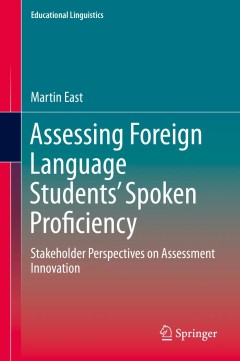
Assessing Foreign Language Students’ Spoken Proficiency: Stakeholder Perspe…
This book presents an in‐depth study of assessment innovation and its impact on teaching and learning. The context is New Zealand, and the focus is additional languages other than English and the recent introduction of a radical new assessment of students’ spoken proficiency, called interact. The book crosses the traditional theoretical and methodological boundaries associated with language…
- Edition
- Ed. 1
- ISBN/ISSN
- 978-981-10-0303-5
- Collation
- XIX, 227
- Series Title
- Educational Linguistics
- Call Number
- 400.1 EAS a
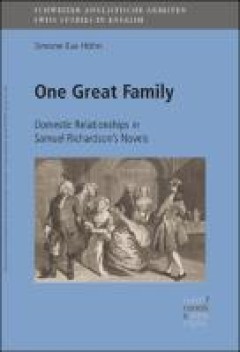
One Great Family : Domestic Relationships in Samuel Richardson’s Novels
This study examines concepts of morality and structures of domestic relationships in Samuel Richardson’s novels, situating them in the context of eighteenth-century moral writings and reader reactions. Based on a detailed analysis of Richardson’s work, this book maintains that he sought both to uphold hierarchical concepts of individual duty, and to warn of the consequences if such hierarch…
- Edition
- -
- ISBN/ISSN
- -
- Collation
- -
- Series Title
- -
- Call Number
- 420

The Poetry of Anna Akhmatova : A Conquest of Time and Space
The present study, the first of ist kind, goes beyond the investigation of separate pieces of verse to their intermeshing with one another in the creative output of Akhmatova to express the gist of her poetics, on the one hand, and with world literature and culture as important instruments, on the other. Includes texts in Russian, with translations into English
- Edition
- -
- ISBN/ISSN
- 9783954792412
- Collation
- -
- Series Title
- -
- Call Number
- 410
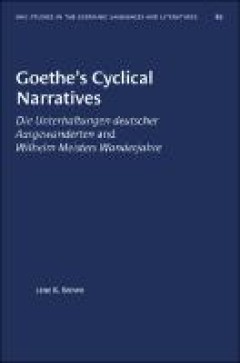
Goethe's Cyclical Narratives : "Die Unterhaltungen deutscher Ausgewanderten" …
The novelty of this study lies in its techniques for understanding the deliberate narrative contradictions and elusive parody in Goethe's work. Interpretation of the entire "Unterhaltungen", including the Märchen, establishes Goethe's principles of cyclical composition. By pursuing the elaboration of these principles in the "Wanderjahre"—the undependable narrator, multiple perspectives, and …
- Edition
- -
- ISBN/ISSN
- -
- Collation
- -
- Series Title
- -
- Call Number
- 43

Language Endangerment and Language Revitalization : An Introduction
In almost every part of the world, minority languages are being threatened with extinction. At the same time, dedicated efforts are being made to document endangered languages, to maintain them, and even to revive once-extinct languages. The book presents a comprehensive overview of language endangerment and revitalization. Among the examined aspects are: degrees of endangerment, definitions of…
- Edition
- -
- ISBN/ISSN
- 9783110896589
- Collation
- -
- Series Title
- -
- Call Number
- 400
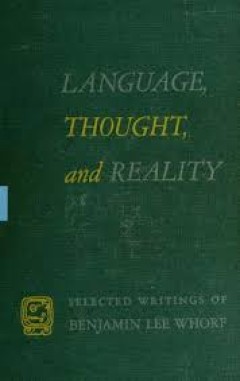
Language, Thought, and Reality (1956 edition)
Overview: A unique perspective on the confluence of the three basic conceptual frameworks in human experience. Contains several studies, with data, of remarkable world views of disparate cultures based on their specific cultures language. The premise is that how people experience the world, then think about it, then create a language around it, alters their perception of the world in very funda…
- Edition
- -
- ISBN/ISSN
- -
- Collation
- 278 Pages
- Series Title
- -
- Call Number
- 404 WHO l
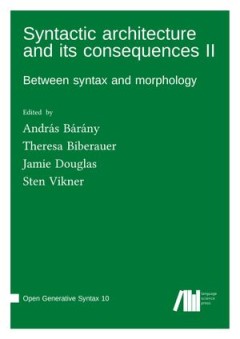
Syntactic Architecture and its Consequences II : Between Syntax and Morphology
This volume collects novel contributions to comparative generative linguistics that “rethink” existing approaches to an extensive range of phenomena, domains, and architectural questions in linguistic theory. At the heart of the contributions is the tension between descriptive and explanatory adequacy which has long animated generative linguistics and which continues to grow thanks to the i…
- Edition
- -
- ISBN/ISSN
- 9783961102884
- Collation
- -
- Series Title
- Open Generative Syntax 10
- Call Number
- 415 SYN
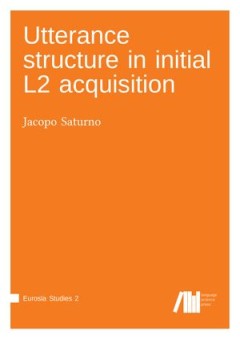
Utterance Structure in Initial L2 Acquisition
This work is devoted to morphosyntactic processing in the earliest stages of L2 Polish. The target structure taken into consideration is the morphosyntactic opposition between the nominative and accusative case, respectively corresponding to the subject and object function. This is the first book-length work devoted to the VILLA project, a large multi-national initiative within which 90 adult l…
- Edition
- -
- ISBN/ISSN
- 9783961102617
- Collation
- -
- Series Title
- Eurosla Studies 2
- Call Number
- 401.93 SAT u
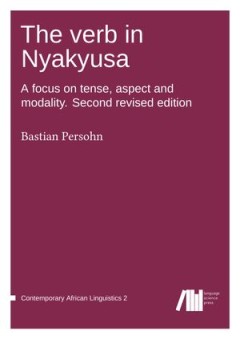
The Verb in Nyakyusa : A focus on tense, aspect, and modality
Nyakyusa is an underdescribed Bantu language spoken by around 800.000 speakers in the Mbeya Region of Tanzania. This book provides a detailled description of the verb in this language. The topics covered include the complex morphophonological and morphological processes as well as verb-to-verb derivation, copula verbs and grammaticalized verbs of motion. The main body of the book consists of a …
- Edition
- -
- ISBN/ISSN
- 9783961102945
- Collation
- -
- Series Title
- Contemporary African Linguistics 2
- Call Number
- 467.8 PER v
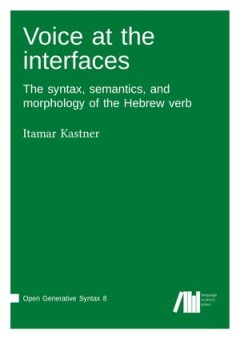
Voice at the interfaces : The syntax, semantics, and morphology of the Hebrew…
This books presents the most comprehensive description and analysis to date of Hebrew morphology, with an emphasis on the verbal templates. Its aim is to develop a theory of argument structure alternations which is anchored in the syntax but has systematic interfaces with the phonology and the semantics. Concretely, the monograph argues for a specific formal system centered around possible valu…
- Edition
- -
- ISBN/ISSN
- 9783961102570
- Collation
- -
- Series Title
- Open Generative Syntax 8
- Call Number
- 492.4 KAS v
 Computer Science, Information & General Works
Computer Science, Information & General Works  Philosophy & Psychology
Philosophy & Psychology  Religion
Religion  Social Sciences
Social Sciences  Language
Language  Pure Science
Pure Science  Applied Sciences
Applied Sciences  Art & Recreation
Art & Recreation  Literature
Literature  History & Geography
History & Geography